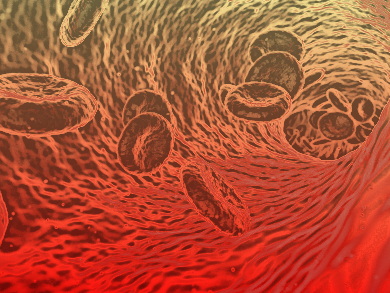One of the early steps in atherosclerosis is the formation of foam cells in the arteries, which can lead to plaque formation. An important signaling pathway to prevent foam cell formation includes the activation of the thermally sensitive calcium channel TRPV1. Capsaicin, the active component of chili peppers, has been found to activate TRPV1, but its general administration causes toxic side effects.
Bo Tang, Shangdong Normal University, Jinan, China, and colleagues have used antibodies against TRPV1 to localize copper sulfide nanoparticles at the site of plaque formation. These nanoparticles can increase the local temperature when activated by harmless near-infrared (NIR) light. Increasing the temperature near TRPV1 channels activates the signaling pathway and leads to an inhibition of foam cell formation.
The technique was first validated in cell culture, showing that the antibody-bound nanoparticles can indeed induce downstream signaling of TRPV1 and provide a similar response to the application of capsaicin. It was shown that, in a test tube, the application of NIR light increases the temperature of the nanoparticle solution from room temperature to more than 65 °C in only three minutes.
The antibody-nanoparticle conjugates were then injected into mice susceptible to atherosclerosis. The team found that under NIR light, TRPV1 was activated in the arterial walls. The nanoparticle conjugates have a low toxicity and could also be used to image the arteries to screen for plaque formation. This could lead to the development of a new way of monitoring and treating those known to be at risk for atherosclerosis.
- Copper sulfide nanoparticles as a photothermal switch for TRPV1 signaling to attenuate atherosclerosis,
Wen Gao, Yuhui Sun, Michelle Cai, Yujie Zhao, Wenhua Cao, Zhenhua Liu, Guanwei Cui, Bo Tang,
Nat. Commun. 2018.
https://doi.org/10.1038/s41467-017-02657-z



